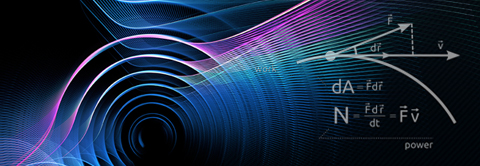Non-Hermitian Casimir Effect of Magnons
2023.07.17 16:50
| 날짜 | 2023-07-18 11:00 |
|---|---|
| 일시 | July 18(Tue), 11:00AM |
| 장소 | E6-2, #1323 |
| 연사 | Dr. Kouki Nakata (Advanced Science Research Center, Japan Atomic Energy Agency) |
Dr. Kouki Nakata (Japan Atomic Energy Agency)을 모시고 'Non-Hermitian Casimir Effect of Magnons' 주제에 대한 세미나를 개최하고자 합니다.
물리학과 구성원 여러분들의 많은 참여 부탁드립니다.
-------------------------------------------------------------------------------------------------------------------------------------
1) Time
- at 11:00 on July 18, 2023
2) Venue
- E6, Rm#1323
3) Speaker
- Dr. Kouki Nakata (Advanced Science Research Center, Japan Atomic Energy Agency)
4) Talk Title
- Non-Hermitian Casimir Effect of Magnons
5) Abstract
- Recently, there has been a growing interest in non-Hermitian quantum mechanics [1]. The key concepts of quantum mechanics are quantum fluctuations. Quantum fluctuations of quantum fields confined in a finite-size system induce the zero-point energy shift. This quantum phenomenon, the Casimir effect [2], is one of the most striking phenomena of quantum mechanics in the sense that there are no classical analogs and has been drawing much attention from various research areas, including high energy physics, beyond the hierarchy of energy scales. However, the non-Hermitian extension of the Casimir effect and the application to spintronics [3] remain missing ingredients. Here we fill this gap. By developing a magnonic analog [4] of the Casimir effect into non-Hermitian systems [5], we show that this non-Hermitian Casimir effect of magnons [6] is enhanced as the Gilbert damping constant (i.e., the energy dissipation rate) increases. When the damping constant exceeds a critical value, the non-Hermitian Casimir effect of magnons exhibits an oscillating behavior, including a beating one, as a function of the film thickness and is characterized by the exceptional point. Our result suggests that energy dissipation serves as a key ingredient of Casimir engineering [7].
References:
[1] Y. Ashida et al., Adv. Phys. 69, 249 (2020).
[2] H. B. G. Casimir, Proc. Kon. Ned. Akad. Wetensch. 51, 793 (1948).
[3] H. Yuan et al., Phys. Rep. 965, 1 (2022).
[4] KN and K. Suzuki, Phys. Rev. Lett. 130, 096702 (2023).
[5] K. Lee et al., Nat. Nanotechnol. 16, 1337 (2021); Y. Tserkovnyak, Phys. Rev. Res. 2, 013031 (2020).
[6] KN and K. Suzuki, arXiv:2305.09231 (2023).
[7] T. Gong et al., Nanophotonics 10, 523 (2021).







